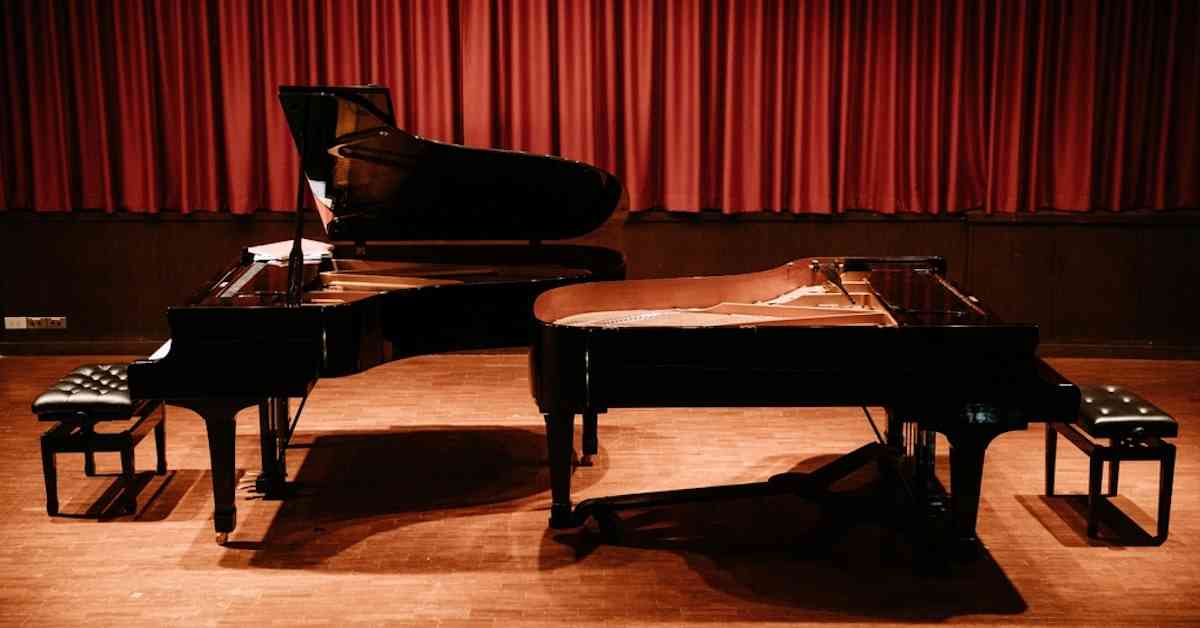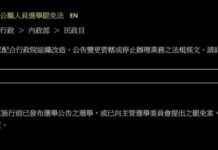Unlocking the Hidden Stories Behind Famous Piano Brands: More Than Just Yamaha and Steinway
Pianos are often the instrument of choice for many people. When faced with this instrument, often referred to as the “king of instruments,” have you ever noticed the golden English letters on the black lacquered surface of the piano? These letters represent the brand of the piano!
While we all know that the classical music we are familiar with today originated in Europe, the pianos we play may not necessarily be born in Europe. Today, let’s take a leisurely afternoon tea to explore the hidden stories behind some of the “commonly seen piano brands in Taiwan”!
### Yamaha
When it comes to the most common piano brands in Taiwan, they mainly come from Japan, namely “Kawai” and “Yamaha.” But how did Yamaha come about? Let’s go back to 1887. At that time, a harmonium in a small school in Hamamatsu broke down. Since there was no one in the city skilled in repairing musical instruments, they sought help from Torakusu Yamaha (山葉寅楠, Yamaha Torakusu, 1851-1916), who was skilled in mechanical structures.
At that time, Torakusu Yamaha was a medical equipment repairer and a watchmaker. This opportunity led to his first encounter with this instrument—the harmonium. With quick thinking, he immediately realized two things: first, he could repair this harmonium well! Second, he could also make this harmonium, and do so at a low cost with high profits! After repairing the harmonium, he immediately shifted from repairs to the development of manufacturing harmoniums.
However, despite Torakusu Yamaha working tirelessly for two months with friends to create the first harmonium, it was “completely out of tune”! To perfect this harmonium, Torakusu Yamaha carried it on his shoulders to Tokyo after being told by a professor at the Tokyo University of the Arts that “this harmonium is unusable.”
Nevertheless, Torakusu Yamaha did not give up. After studying music theory at the Tokyo University of the Arts, he finally produced the second generation harmonium, receiving unanimous praise that “this harmonium can replace imported harmoniums!”
Riding on the wave of success in Tokyo, harmonium sales flourished, leading to the production of various types of instruments such as brass instruments, percussion instruments, and even expanding into the furniture, engine, and motorcycle industries. This eventually led to the establishment of the Yamaha Corporation, a well-known brand to all of us today.
### Kawai
Also hailing from Japan, Kawai is another common piano brand found in Taiwanese households and schools. When choosing a piano, many often ask, “Which is better, Kawai or Yamaha?” These two brands, both from Hamamatsu, are thought to be fierce competitors. However, the reality is quite surprising—Kawai and Yamaha, two piano brands from Hamamatsu, actually have a relationship of cooperation and inheritance.
This story begins with a tale of a talented young boy. At the age of ten, this boy, with seemingly innocent and cute words, harbored innate creativity, “He could do many things that adults could not, such as seeing a carriage passing by on the road and then making a small model of a carriage himself.”
Torakusu Yamaha saw his natural talent and agreed to take this ten-year-old boy as his apprentice after hearing his wish. As an apprentice at the Yamaha organ manufacturing company, this young boy not only learned the tuning methods of pianos but also independently developed a new “string striker.” This new structure was used in the first Japanese-made upright piano introduced by Torakusu Yamaha in 1900.
This legendary young boy was none other than the founder of Kawai pianos, Koichi Kawai (河合小市, Kawai Koichi, 1886-1955). Koichi Kawai later obtained eighteen patents related to musical instruments, such as a new soundboard and automatic production machinery for parts, and in 1927 established the Kawai Musical Instruments Research Institute, which was renamed two years later to Kawai Musical Instruments Manufacturing Company, now known as Kawai pianos. The familiar “K. KAWAI” we often see on pianos is derived from Koichi Kawai’s surname (Kawai) and first name (Koichi abbreviated to K).
### Steinway & Sons
When it comes to expensive pianos, many people will unanimously mention the name “Steinway.” Upon seeing the English name “Steinway & Sons,” one can easily imagine that Steinway pianos were crafted by “Steinway and his sons.”
The founder, German-American Heinrich Engelhard Steinway (Heinrich Engelhard Steinweg, 1797-1871), was born in the Holy Roman Empire, with a childhood marked by hardship and loneliness, leading him to join the military at the age of 15. Ten years later, he retired from the German army and pursued a livelihood as a carpenter.
By chance, Heinrich Engelhard Steinway became an apprentice to an organ manufacturer, thus embarking on the path of musical instruments. He began making pianos, albeit restricted by guild regulations, working secretly in his own kitchen. Finally, in 1835, he crafted the first square piano, presenting it to his wife Juliane Thiemer at their wedding.
In 1850, due to political unrest in Germany, Heinrich Engelhard Steinway moved to the United States with his family. At the suggestion of a friend, he changed his name to Henry Engelhard Steinway to appeal more to Americans.
In their fourth year in America, the renowned Steinway & Sons company was established, jointly operated by Henry Engelhard Steinway and his sons. They dedicated themselves to piano research and made significant contributions to modern pianos. For instance, Henry Steinway Jr. (Henry Steinway, Jr., 1831-1865) constructed the prototype of the modern grand piano, applying “cross-stringing” to grand pianos and patenting it. By crossing the strings, the piano’s area was significantly reduced, revolutionizing the instrument.
### Bösendorfer
Bösendorfer pianos, known for their durability, have a unique reputation in the world of pianos. It is said that a young Franz Liszt exerted such strong finger pressure that he “broke” many pianos, but one piano stood strong against his force, catching every bit of his strength without a scratch—this was a Bösendorfer piano.
The Austrian piano brand, Bösendorfer, is a premium brand in the piano industry. Renowned composers such as Mozart, Beethoven, Liszt, and Brahms have all used Bösendorfer pianos. Known for their meticulous craftsmanship, they produce only about 300 pianos a year. As a result, Bösendorfer is relatively lesser-known in Taiwan, known more among connoisseurs.
Founded in 1796, the founder Ignaz Bösendorfer (Ignaz Bösendorfer, 1796-1859) was an apprentice to the famous piano maker Joseph Brodmann (Joseph Brodmann, 1763-1848) at the time. Due to his outstanding performance, he took over Brodmann’s business and established Bösendorfer Piano Factory Limited in 1828.
In piano design, Bösendorfer is quite conservative, striving for the sound of early 19th-century Viennese musicians, and resisting the technological improvements in piano manufacturing by Steinway. Particularly, unlike the standard 88-key pianos, Bösendorfer is the only brand that produces 92 and 97-key grand pianos, known as models “225” and “290: Imperial.” The additional keys were added to cater to a wider range of low notes, resulting in a richer, more penetrating sound.
In 2008, Bösendorfer was acquired by Yamaha from Japan. Over nearly two centuries, Bösendorfer has remained steadfast in their pursuit of the sweet, round sound of Vienna, crafting exquisite pianos.
### Fazioli
Compared to the earlier established piano brands, the last player today is considered the “youngest”—the Italian brand “Fazioli,” founded in 1979. Unlike the founders of other piano brands who came from carpentry and mechanical backgrounds, the founder of Fazioli, Paolo Fazioli (1944-), displayed a talent for pianos from a young age, regularly taking piano lessons with a piano teacher. Fazioli holds a university degree in mechanical engineering, a bachelor’s degree in piano performance, and a master’s degree in composition.
Initially, Fazioli did not directly engage in piano manufacturing. At that time, his brother was taking over the family business of producing office furniture, and Fazioli joined the company. It wasn’t until 1978, with both experience in making furniture and connections in the music industry, that he voiced his dream—he wanted to create a handcrafted grand piano with a unique tone.
To realize his dream, he left the furniture factory and immersed himself in the study of grand piano production. By the end of the next year, Fazioli’s piano factory was established in the furniture factory in Sacile, Italy, and the company was formally established in 1981.
However, crafting a piano relies on many visible and invisible technical aspects. By the late 20th century, there were already many well-known piano brands on the market. Could Fazioli’s piano business truly stand the test of time?
In the first few years of the company’s establishment, there was general skepticism towards Fazioli pianos. Fortunately, Fazioli’s brother fully supported his decision and passed on many woodworking techniques to him. Fazioli assembled a team of acoustic, materials, and piano experts who collaborated on piano development.
With the experts’ assistance, Fazioli quickly achieved success. Today, the F278 and F308 are Fazioli’s most popular models. The F308 is the world’s “longest” piano, measuring 308 cm in length. The purpose is to increase the length of the bass strings, enhancing the richness and penetrating power of the sound.
What sets Fazioli pianos apart is their inclusion of “four pedals” to create a “mute effect without affecting the tone”! Traditionally, the third pedal on a grand piano serves to “shift the hammers,” reducing the volume by limiting the range of hammer strikes. In contrast, Fazioli’s fourth pedal functions to “reduce the distance between the hammers and strings,” vertically moving the hammers—stepping on the fourth pedal raises the entire row of hammers. This method reduces volume due to the shortened lever arm for hammer strikes, preserving the piano’s original tone. Isn’t this a clever approach?
Today’s stories end here. After learning about the stories behind these five piano brands, which part resonated with you the most? The next time you see pianos from different brands, hopefully, you will recall these stories.












